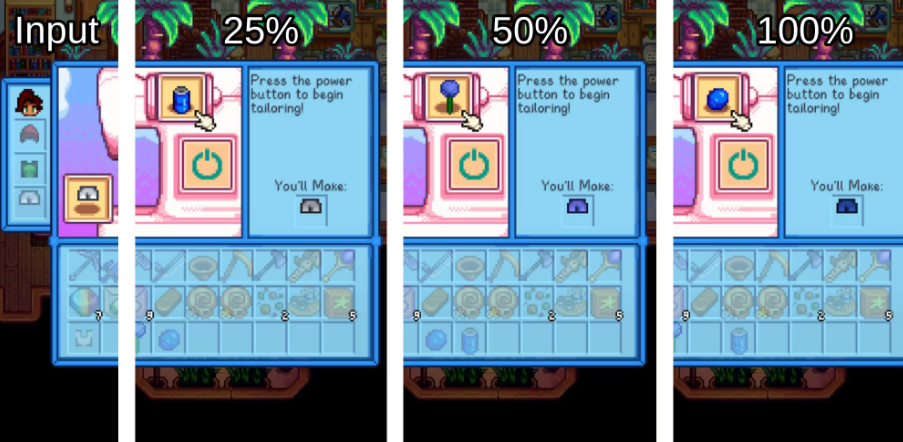Stardew Valley, the beloved farming simulation role-playing game, offers players a wide range of customization options, including the ability to dye and tailor clothes. Whether you’re looking to create a pristine wedding outfit or simply want to refresh your farmer’s look, dyeing clothes white can be a great way to achieve a clean, classic appearance. This guide will walk you through the process of dyeing clothes white in Stardew Valley, along with providing additional information on clothing customization and dyeing in general.
Contents
- 1 Understanding Clothing in Stardew Valley
- 2 The Dyeing Process in Stardew Valley
- 3 Tips for Dyeing Clothes White
- 4 Beyond White: Other Dyeing Options in Stardew Valley
- 5 Clothing and Fashion in Stardew Valley
- 6 The Role of White Clothing in Stardew Valley
- 7 Advanced Dyeing Techniques
- 8 Maintaining White Clothes in Stardew Valley
- 9 Frequently Asked Questions (FAQ)
- 10 Conclusion
Understanding Clothing in Stardew Valley
Before we dive into the specifics of dyeing clothes white, let’s review some basics about clothing in Stardew Valley:
Types of Clothing Items
- Shirts
- Pants
- Shoes
- Hats
- Accessories (e.g., backpacks)
Obtaining Clothes
There are several ways to obtain clothing items in Stardew Valley:
- Purchasing from shops (e.g., Hat Mouse, Sandy’s shop)
- Crafting using the Sewing Machine
- Receiving as gifts or rewards
- Finding in treasure chests or other locations
The Dyeing Process in Stardew Valley
Dyeing clothes in Stardew Valley involves using the Dye Pots, which are unlocked after completing a specific quest. Here’s an overview of the dyeing process:
- Unlock the Dye Pots
- Obtain the necessary materials
- Use the Dye Pots to change the color of your clothing
Let’s break down each of these steps in detail.
Unlocking the Dye Pots
To unlock the Dye Pots, you need to complete Emily’s 2-heart event. Here’s how:
- Raise Emily’s friendship level to 2 hearts
- Enter Emily and Haley’s house when Emily is home
- Trigger the event where Emily shows you her clothing hobby
- After the event, you’ll receive the Dye Pots recipe
Crafting the Dye Pots
Once you have the recipe, you can craft the Dye Pots. Here’s what you’ll need:
- 1x Furnace
- 1x Coal
- 2x Clay
To craft the Dye Pots:
- Open your crafting menu
- Select the Dye Pots recipe
- Ensure you have the required materials
- Craft the Dye Pots
Obtaining Materials for White Dye
To dye clothes white in Stardew Valley, you’ll need:
- The clothing item you want to dye
- 1x Bleach (for white dye)
Bleach can be crafted using:
- 1x Coal
- 1x Refined Quartz
To craft Bleach:
- Open your crafting menu
- Select the Bleach recipe
- Ensure you have 1 Coal and 1 Refined Quartz
- Craft the Bleach
Using the Dye Pots to Dye Clothes White
Now that you have everything ready, here’s how to dye your clothes white:
- Place the Dye Pots in a convenient location on your farm
- Approach the Dye Pots and interact with them
- In the Dye Pots menu, place the clothing item you want to dye in the left slot
- Place the Bleach in the right slot
- Click the “Dye” button
- Your clothing item will now be dyed white!
Tips for Dyeing Clothes White
Here are some helpful tips to keep in mind when dyeing clothes white in Stardew Valley:
- Plan ahead: Make sure you have all the necessary materials before starting the dyeing process.
- Consider the original color: White dye works best on lighter colored clothing. If you’re trying to dye a dark item white, you may need to use Bleach multiple times.
- Experiment: Don’t be afraid to try dyeing different clothing items. You might discover interesting combinations or effects.
- Reversibility: Remember that dyeing is reversible in Stardew Valley. If you’re not happy with the result, you can always dye the item again.
- Coordinate outfits: White clothing can be a great base for creating coordinated outfits with other colored accessories.
Beyond White: Other Dyeing Options in Stardew Valley
While this guide focuses on dyeing clothes white, it’s worth exploring the other dyeing options available in the game. Here’s a table of different dyes and their recipes:
| Dye Color | Recipe |
|---|---|
| Red | 1x Red Mushroom |
| Orange | 1x Copper Ore |
| Yellow | 1x Gold Ore |
| Green | 1x Fiber |
| Blue | 1x Blueberry |
| Purple | 1x Amethyst |
| Pink | 1x Roe |
| Black | 1x Coal |
| Gray | 1x Stone |
| White | 1x Bleach |
Clothing and Fashion in Stardew Valley
Dyeing clothes is just one aspect of fashion in Stardew Valley. Let’s explore some other ways you can customize your character’s appearance:
Tailoring
The Sewing Machine, which you can obtain from Emily after reaching 4 hearts of friendship, allows you to create custom clothing items. Here’s how it works:
- Place a base clothing item in the left slot
- Place a secondary item in the right slot to determine the design or color
- Click the “Tailor” button to create a new clothing item
Experimenting with different combinations can lead to unique and interesting clothing designs!
Seasonal Considerations
While Stardew Valley doesn’t have a complex climate system, considering the season when choosing your outfit can add to the immersion:
- Spring: Light, pastel colors like white work well
- Summer: Bright, vibrant colors or cool whites
- Fall: Warm earthy tones, but white can provide a nice contrast
- Winter: Dark colors or pure white to match the snow
Fashion and NPC Interactions
While NPCs in Stardew Valley don’t directly comment on your clothing choices, dressing appropriately for festivals and events can enhance your roleplaying experience:
- Wear formal attire (like a newly dyed white shirt) to the Flower Dance
- Don a spooky costume for the Spirit’s Eve festival
- Wear your best outfit for your wedding day
The Role of White Clothing in Stardew Valley
White clothing in Stardew Valley can serve various purposes and carry different meanings:
- Weddings: A white outfit is traditional for weddings in many cultures, and you might want to dye clothes white for your in-game wedding.
- Professional Look: If you’re roleplaying as a doctor or scientist character, white clothing can help establish that persona.
- Religious or Cultural Significance: In some cultures, white clothing holds special significance, which you might want to incorporate into your character’s backstory.
- Cleanliness: White clothes can symbolize the cleanliness and order of a well-run farm.
- Contrast: White clothing can provide a striking contrast against the colorful backdrop of your farm or the town.
Advanced Dyeing Techniques
For those who want to take their clothing customization to the next level, consider these advanced techniques:
Layering Colors
By dyeing an item multiple times with different colors, you can create unique effects:
- Start with a white base (use the white dyeing method described earlier)
- Apply a light color dye
- Apply a darker color dye in specific areas using the Sewing Machine
Creating Patterns
Use the Sewing Machine in combination with dyed clothes to create patterns:
- Dye a clothing item white
- Use the Sewing Machine with different materials to add patterns or designs
Ombre Effects
Create an ombre effect by carefully applying dyes:
- Start with a white clothing item
- Use the Dye Pots to apply a color to the bottom portion
- Gradually work your way up, using less dye each time
Maintaining White Clothes in Stardew Valley
While Stardew Valley doesn’t have a clothing degradation system, roleplaying the maintenance of white clothes can add depth to your gaming experience:
- Regular “Cleaning”: Pretend to wash your white clothes regularly by interacting with water sources on your farm.
- Avoiding “Stains”: When doing farm work, you could roleplay changing into darker clothes to keep your white items clean.
- Seasonal Storage: Store your white clothes during muddy seasons (like fall) and bring them out for special occasions.
Frequently Asked Questions (FAQ)
To conclude our guide, let’s address some frequently asked questions about dyeing clothes white and clothing customization in Stardew Valley:
Q: Can I dye any clothing item white?
A: Yes, any dyeable clothing item in Stardew Valley can be dyed white using Bleach in the Dye Pots.
Q: How many times can I dye a single clothing item?
A: You can dye a clothing item as many times as you want. There’s no limit, and the process is reversible.
Q: Does dyeing clothes white affect their stats or functionality?
A: No, dyeing clothes is purely cosmetic and doesn’t affect any stats or functionality of the item.
Q: Can I dye clothes white from the start of the game?
A: No, you need to unlock the Dye Pots by completing Emily’s 2-heart event, which requires building some friendship with her first.
Q: Are there any white clothing items I can get without dyeing?
A: Yes, some clothing items in the game come in white by default. Check the clothing shops or complete quests to find them.
Q: Can I dye my horse’s hat white?
A: Yes, if you have the horse hat equipment, you can dye it white just like any other clothing item.
Q: Does wearing white clothes have any special effects in the game?
A: No, the color of your clothes doesn’t have any direct gameplay effects. It’s purely for aesthetics and personal preference.
Conclusion
Dyeing clothes white in Stardew Valley is a simple yet effective way to customize your character’s appearance. Whether you’re preparing for a special in-game event, trying to achieve a specific look, or simply enjoy the crisp, clean appearance of white clothing, the dyeing process offers a fun and creative outlet within the game.
Remember that fashion and customization in Stardew Valley are all about personal expression. Don’t be afraid to experiment with different colors, patterns, and styles to find the perfect look for your character. White clothing can serve as a fantastic base for further customization or stand on its own as a classic, timeless choice.
Happy farming and happy dyeing!

Alma J. Lillard is a passionate writer and gaming enthusiast who brings her deep love for Stardew Valley to every piece she creates. As a contributor to StardewUpdate.Today, Alma covers the latest updates, tips, and in-depth guides for players looking to enhance their Stardew Valley experience.

